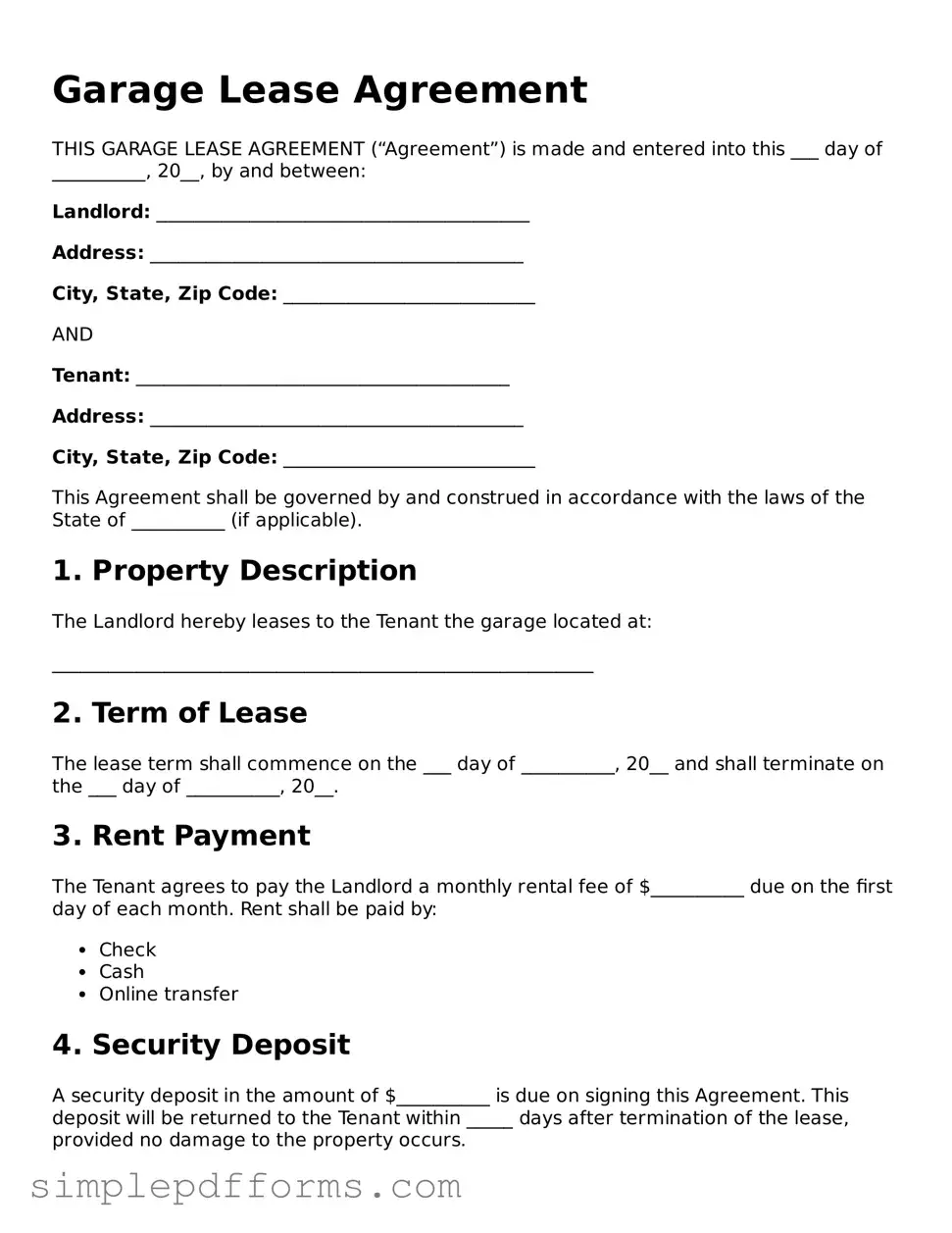Garage Lease Agreement
THIS GARAGE LEASE AGREEMENT (“Agreement”) is made and entered into this ___ day of __________, 20__, by and between:
Landlord: ________________________________________
Address: ________________________________________
City, State, Zip Code: ___________________________
AND
Tenant: ________________________________________
Address: ________________________________________
City, State, Zip Code: ___________________________
This Agreement shall be governed by and construed in accordance with the laws of the State of __________ (if applicable).
1. Property Description
The Landlord hereby leases to the Tenant the garage located at:
__________________________________________________________
2. Term of Lease
The lease term shall commence on the ___ day of __________, 20__ and shall terminate on the ___ day of __________, 20__.
3. Rent Payment
The Tenant agrees to pay the Landlord a monthly rental fee of $__________ due on the first day of each month. Rent shall be paid by:
- Check
- Cash
- Online transfer
4. Security Deposit
A security deposit in the amount of $__________ is due on signing this Agreement. This deposit will be returned to the Tenant within _____ days after termination of the lease, provided no damage to the property occurs.
5. Use of Garage
The Tenant shall use the garage solely for parking a vehicle. The garage shall not be used for:
- Storage of hazardous materials
- Conducting any business
- Any unlawful activities
6. Maintenance and Repairs
The Tenant agrees to keep the garage clean and free from debris. Any necessary repairs shall be reported to the Landlord immediately.
7. Termination
Either party may terminate this Agreement with a written notice of _____ days in advance. Upon termination, the Tenant shall vacate the garage and return the keys to the Landlord.
8. Additional Terms
__________________________________________________________
__________________________________________________________
9. Signatures
By signing below, both parties agree to the terms and conditions of this Garage Lease Agreement.
Landlord Signature: _______________________ Date: ___________
Tenant Signature: ________________________ Date: ___________
THIS AGREEMENT constitutes the entire understanding between the parties. No modification or amendment shall be valid unless in writing and signed by both parties.
